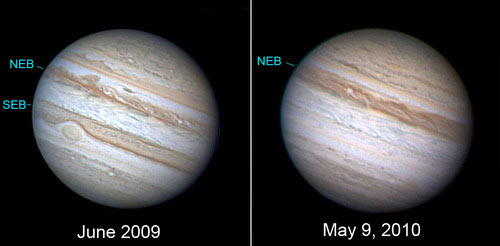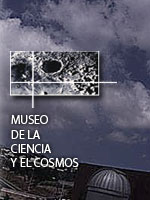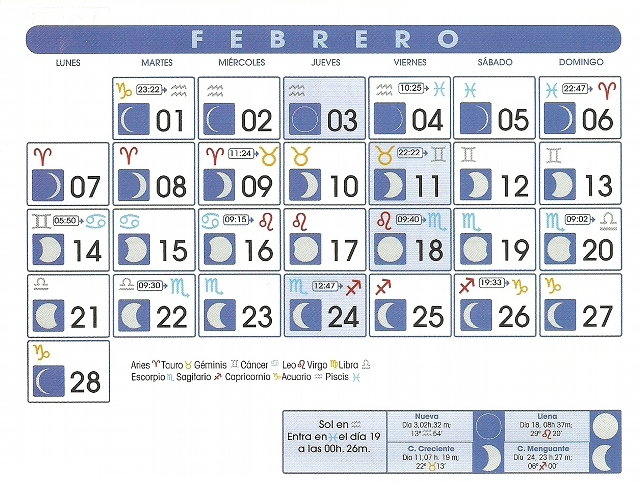
(Credit: Anthony Wesley via The Planetary Society).
The Strange Case of Jupiter’s Disappearing Belt
Most night-sky sights remain unchanged over the brief months and years of a human lifetime. Yes, yes, you sometimes see the flash of a bright meteor. Or the steady wax and wane of a variable star. Or a few minutes of flickering aurora in the deep northern and southern sky. But nearly everything else seems to change slowly, testing the patience of the most Zen-like stargazer.
And yet, the heavens still hold surprises. Just a couple of months ago, as the massive planet Jupiter emerged from behind the sun, astronomers noticed its thick salmon-hued Southern Equatorial Belt had suddenly disappeared. Its absence can be noticed in the most modest backyard telescope. No one knows why the belt vanished. And if the experts are correct, it could return at any time….
Usually, the northern and southern equatorial belts are visible in small telescopes as dark bands just above and below the equator of the great planet (as in the image above). These large belts, each wider than our Earth, encircle the planet because of the high winds in Jupiter’s atmosphere. The belts appear dark because they’re made of warm gas slightly deeper in the planet’s atmosphere than the higher-up and cooler gases of lighter-toned “zones” which lie in between the belts.
But if you take a look at Jupiter right now, you’ll see northern belt, but not the southern belt. The southern equatorial belt (SEB) suddenly faded or been obscured by higher clouds.
Why?
No one knows for sure. But while it’s an unsettling sight, the SEB has faded before. Over the 20th century, the belt has faded or disappeared fifteen times, most recently in 1990 and 1993. Before that, 1971 and 1975. And each time the SEB faded, it has returned (or revived) just as suddenly.
Again, know one knows for sure what causes the revivals of the SEB. But there are some ideas. Perhaps the most promising was proposed by the amateur-turned-professional astronomer Elmer Reese, who suggested there are three deep vents in the Jovian atmosphere that suddenly erupt, causing dark spots of warm gas which are quickly dispersed into a revived SEB by the brisk winds higher-up in the atmosphere. The whole process takes just a few days.
Reese’s model predicted the most recent revivals. While there is no word yet on when the next revival of the SEB may occur, past observation suggest it could happen anytime in the next 3-18 months. And since professional astronomers are consumed with looking at more exotic objects with large telescopes, it’s likely the reappearance of Jupiter’s SEB will first be detected by keen-eyed amateur astronomers.
So keep an eye out for the sudden reappearance of the SEB over the coming weeks. And at the very least, look for its absence. You don’t get to see something like this very often.
(Info One-minute astronomer)






.gif)


.gif)



